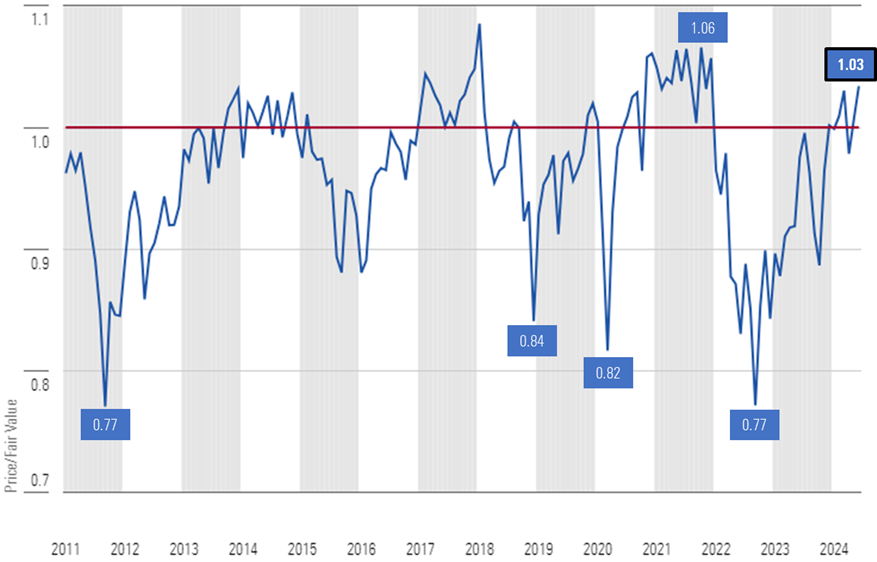20 Pro Suggestions For Choosing AI Stock Prediction Websites
20 Pro Suggestions For Choosing AI Stock Prediction Websites
Blog Article
Top 10 Tips For Assessing Ai And Machine Learning Models Used By Ai Trading Platforms To Predict And Analyze Stocks
Examining the AI and machine learning (ML) models used by trading and stock prediction platforms is crucial to ensure they deliver accurate, reliable, and actionable information. Models that are poorly constructed or overly hyped-up could lead to inaccurate predictions, as well as financial losses. Here are 10 best ways to evaluate the AI/ML platform of these platforms.
1. The model's approach and purpose
The objective clarified: Identify the model's purpose and determine if it's intended to trade at short notice, investing in the long term, sentimental analysis, or managing risk.
Algorithm disclosure: Find out whether the platform is transparent about the algorithms it uses (e.g. neural networks and reinforcement learning).
Customizability: Determine if the model can be tailored to your specific trading strategy or your risk tolerance.
2. Evaluation of Performance Metrics for Models
Accuracy Check the accuracy of the model's predictions. Do not rely solely on this measurement, however, because it can be misleading.
Precision and recall: Evaluate whether the model is able to identify real positives (e.g. accurately forecasted price movements) and reduces false positives.
Risk-adjusted returns: Find out whether the model's predictions lead to profitable trades, after taking into account risks (e.g. Sharpe ratio, Sortino coefficient).
3. Check the model with backtesting
Historical performance: Test the model with historical data to assess how it performed in past market conditions.
Out-of-sample testing: Ensure the model is tested with the data it was not trained on to avoid overfitting.
Analysis of scenarios: Check the model's performance under different market conditions (e.g., bull markets, bear markets high volatility).
4. Check for Overfitting
Signs of overfitting: Search for models that perform extremely good on training data however, they perform poorly with unobserved data.
Regularization techniques: Determine if the platform uses techniques like L1/L2 regularization or dropout to avoid overfitting.
Cross-validation (cross-validation): Make sure the platform is using cross-validation to evaluate the model's generalizability.
5. Review Feature Engineering
Relevant Features: Examine to determine whether the model includes relevant features. (e.g. volume prices, technical indicators, price and sentiment data).
Selected features: Select only those features that are statistically significant. Avoid redundant or irrelevant data.
Dynamic feature updates: Find out whether the model will be able to adjust to changing market conditions or to new features as time passes.
6. Evaluate Model Explainability
Interpretability: The model needs to provide clear explanations to its predictions.
Black-box platforms: Be wary of platforms that use excessively complex models (e.g. neural networks that are deep) without explainingability tools.
The platform should provide user-friendly information: Make sure the platform offers actionable insights which are presented in a way that traders are able to comprehend.
7. Examining the model Adaptability
Market shifts: Find out whether the model is able to adapt to new market conditions, such as economic shifts or black swans.
Continuous learning: Check if the system updates the model often with fresh data to increase performance.
Feedback loops. Be sure your model is incorporating the feedback of users and real-world scenarios to improve.
8. Be sure to look for Bias or Fairness
Data bias: Make sure that the information provided in the training program is representative and not biased (e.g. an bias towards specific sectors or periods of time).
Model bias: Determine if are able to monitor and minimize the biases in the forecasts of the model.
Fairness - Ensure that the model is not biased towards or against certain sector or stocks.
9. Evaluation of Computational Efficiency
Speed: Check whether the model is able to generate predictions in real-time, or with minimal latency, specifically in high-frequency trading.
Scalability Test the platform's capacity to handle large sets of data and multiple users with no performance degradation.
Resource usage: Check to see if your model is optimized for efficient computational resources (e.g. GPU/TPU use).
Review Transparency, Accountability, and Other Problems
Model documentation. You should have an extensive description of the model's design.
Third-party auditors: Examine to see if the model has undergone an independent audit or validation by a third-party.
Error handling: Check to see if your platform has mechanisms for detecting and correcting model errors.
Bonus Tips
User reviews and case studies Review feedback from users to get a better idea of how the model performs in real-world situations.
Trial period: Use the free demo or trial to test out the models and their predictions.
Customer Support: Verify that the platform provides solid technical or model-related support.
These guidelines will help you evaluate the AI and machine-learning models employed by platforms for stock prediction to make sure they are trustworthy, transparent and in line with your objectives in trading. Check out the most popular AI stocks for blog examples including AI stocks, AI stock picker, AI stock trading app, AI stock, AI stock trading, AI stocks, market ai, ai trade, ai investment app, AI stock trading and more.
Top 10 Suggestions When Evaluating Ai Trading Platforms For Their Community And Social Features
It is essential to comprehend how users interact, share information and learn from each other through analyzing the social and community capabilities of AI-driven prediction and trading platforms. These features enhance the user experience by offering helpful assistance. These are 10 top tips to evaluate the social and community elements of these platforms:
1. Active User Community
Tips - Make sure the platform is backed by a base of users active in engaging in regular discussions, sharing insight, and providing feedback.
Why: A vibrant community is a place where members can develop and share knowledge.
2. Discussion Boards and Forums
You can evaluate the quality of an online discussion forum or message board by evaluating its activity levels.
Why Forums are fantastic method for users to exchange thoughts, debate trends, and even ask questions.
3. Social Media Integration
Tip: Determine whether the platform you are using allows users to share their insights and updates through social media channels, such as Twitter or LinkedIn.
Why: The integration of social media can improve the level of engagement and also provide market updates in real-time.
4. User-Generated Materials
Look for features such as the ability to create and publish content.
Why: Content created by users fosters collaboration and offers a different perspective.
5. Expert Contributions
Find out if experts from the industry, like market analysts or AI experts, have contributed to the project.
Why? Expert insight adds credibility and depth to the community discussions.
6. Chat in Real-Time, Chat in Real-Time and Chat in Real Time
Examine if there are instant messaging or chat options that allow users to communicate instantaneously.
Why? Real-time interactions facilitate quick information exchange and collaboration work.
7. Community Moderation and Support
Tip - Assess the support and level of moderation within your community.
What is the reason? Moderation that is effective helps to create a positive and respectful atmosphere. Support is available to resolve issues quickly.
8. Webinars and Events
TIP: Find out whether your platform offers live sessions, Q&As, or webinars.
Why? These events are an excellent opportunity to gain knowledge about the industry and have direct interaction with experts.
9. User Reviews and Comments
Look for options that allow users to submit feedback and reviews on the platform or the community functions it offers.
Why: User input helps to identify strengths and areas to improve.
10. Rewards and Gamification
Tips. Make sure the platform offers gamification components (e.g. leaderboards, leaderboards and badges) as well as rewards for active engagement.
Gamification is a great way to motivate users' involvement in the online community.
Bonus tip: Privacy and security
Assure that privacy and security features for community and social functions are secure to safeguard the privacy of data and user interaction.
If you take the time to thoroughly review these aspects it is possible to determine if you think the AI software for stock predictions and trading has an active and friendly community that will enhance your trading experience and knowledge. Read the top rated recommended you read for more advice including ai share trading, ai software stocks, best stock prediction website, investing with ai, ai in stock market, best ai trading platform, best AI stock prediction, investing with ai, ai options trading, investing with ai and more.